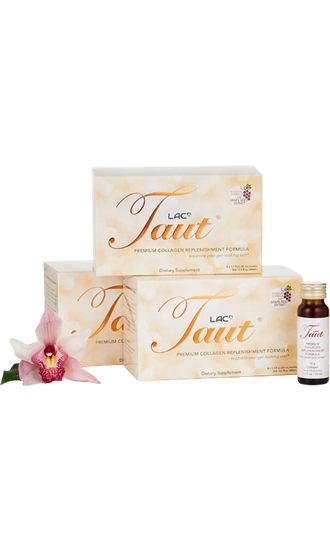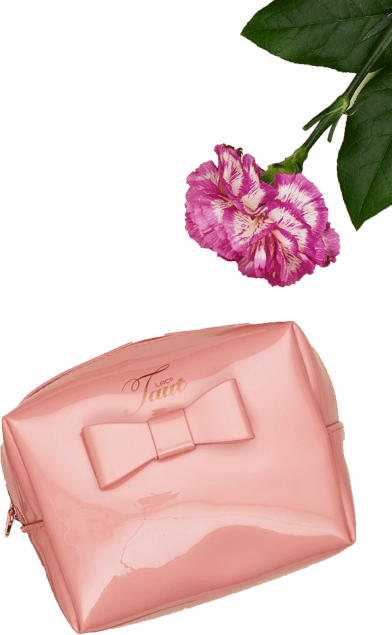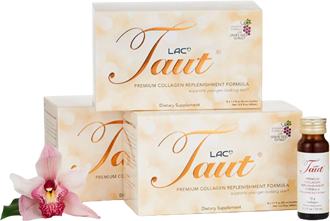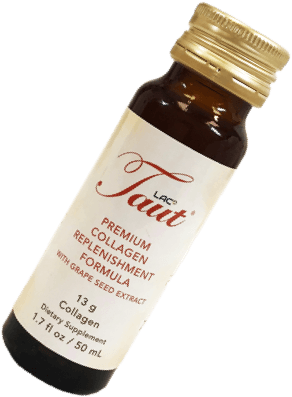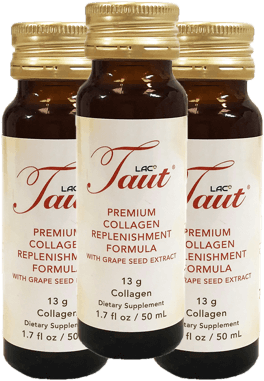Grey Hair? 9 Toxic Ingredients in Your Hair Dyes To Avoid

Should we embrace our grey hair? There is so much we can do to help improve our skin and keep it looking as youthful as possible. Yet there is so little we can do to stop our hair from turning grey. So what do we do? We cover up with hair color and highlights! I did that after turning 35, until I suffered an allergic reaction to the hair dye that seriously damaged my scalp. That’s when I learned a hard lesson: many hair colors contain harsh, harmful chemicals that can cause serious scalp irritation in those with sensitive scalps!
I started looking for healthy alternatives and also got obsessed with researching the ingredients used in hair color. To my dismay, most of the beauty hair products contain harmful ingredients that can be toxic to our scalp and may cause an allergic reaction, damage our hair over time, irritate our scalp and impact our health.
What does all this mean for you?
The good news is, like me, you can still have beautiful, healthy hair without any grey, thanks to more natural options like organic hair dye and drinkable liquid collagen supplements.
To help you make the switch to a more natural hair routine, we reached out to hair and skincare experts and break down
1. 9 hair dye ingredients to avoid
2. Safe hair color brands to use instead
3. How can you stop your hair from greying
9 Toxic Ingredients Found in Hair Dyes
Ammonia
Ammonia is one of the most commonly known toxic dye ingredients in hair dye. It’s what gives it that powerful, unpleasant smell. It’s used in hair color because it allows the color to penetrate the hair cuticle. However, it can often come with consequences, especially with ingredients like DMDM hydantoin. “Over time, this leads to dry and damaged hair, hair loss, as well as irritation to the throat and respiratory system from exposure to ammonia and hydrogen peroxide,” says Adina Mahalli, hair and skincare expert with Maple Holistics.
Paraphenylenediamine (PPD)
PPD removes hair’s existing pigment, which allows the new color to take its place. “Overexposure to this toxic chemical, which is also a known carcinogenic, can lead to complications like rhabdomyolysis, respiratory failure, and cardiac health issues,” Mahalli says.
Para-toluenediamine (PTD)
“Research suggests that an alarming percentage of PTD is absorbed through the skin during the dying process,” Mahalli says. Not only is this chemical bad for the person getting their hair dyed, but it can also cause hairdressers allergies as well.
Quaternium-15
Be sure to check the ingredient list of your hair dye and ensure it doesn’t contain any quaternium-15 or coal tar. This chemical, used as a preservative in many cosmetic and hair products, is a known allergen. It releases formaldehyde, which can result in a contact dermatitis reaction in sensitive people, Mahalli says.
Resorcinol
Resorcinol is a chemical that is not to be taken lightly as it can impact not just your scalp but your overall health too. “It has been classified as a hazardous chemical because it’s combustible, can cause abdominal pain when inhaled, and causes redness when it contacts the skin,” Mahalli says. “On top of these allergic reactions, resorcinol is also a known hormone disruptor with the potential to cause thyroid dysfunction and affect your central nervous system.”
Titanium Dioxide
Titanium dioxide, a mineral used as a pigment in hair coloring products, can penetrate the hair shaft, making it beneficial to avoid nonetheless. “It’s generally considered safe and is often used in sunscreens, but when inhaled in large quantities, as is the case with hair dying, it becomes a potential carcinogen,” Mahalli says.
Phthalates
Phthalates are chemicals found in many different products, including hair dyes, cosmetics, nail polishes, and even food packaging, and are classified as an endocrine disruptor. It helps make plastic soft and flexible, but it’s not something you want to put on your body. “Phthalates are known endocrine disruptors, which means they interfere with your body’s regular hormone functioning,” Mahalli says. “Seeing as what you put onto your hair is eventually absorbed into the bloodstream at least to some degree, you’re better off staying away from these chemicals.”
Sodium Lauryl Sulfate (SLS)
Sodium lauryl sulfate in hair dye helps clean your hair but can also cause skin irritation. “It is also found in household cleaning items which should give you an idea of just how clean it makes your hair—almost too clean,” Mahalli says. “It not only strips your hair of dirt but also essential, natural oils which can leave your hair weak and prone to breakage. Continuous exposure to SLS can even cause skin irritations.”
Alkylphenol Ethoxylates (APEs)
“Similar to SLS, APEs clean your hair almost too well, stripping it of its protective oils in the process,” Mahalli says. “APEs are also hormone disruptors which means that they have the potential to have a negative effect on your optimal body functioning.”
Many high-end hair salons now also offer safer alternatives free from potentially harmful chemicals. Make sure to check with your color stylist to check the ingredients in the hair color if you are allergic to any of these harmful chemicals.
3 Safe Hair Dye Brands
Madison Reed
Madison Reed set out to break the rules with their hair color products that are effective and safe to use. The brand’s permanent hair colorants are made in Italy without any ammonia, parabens, resorcinol, PPD, phthalates, SLS, titanium dioxide, or gluten. They do, however, add in keratin, argan oil and ginseng root extract for added hair-enhancing benefits. The best part: You can dye your hair yourself in the comfort of your home. Madison Reed’s website helps you find the perfect shade for you and then sends you a kit right to your door.
I personally have been using Madison Reed since my hair dye incident and I absolutely love this brand. I still have a little tingle feeling if I spread the hair color on my scalp for too long (e.g. more than 45 minutes), but other than that, my hair turns out beautifully without any need for a doctor's visit, or should I say, horrible hair color experience.
Natulique
Founded in Denmark, Natulique uses certified organic ingredients, such as natural sunflower seed extract, jojoba oil, and apricot seed oil, in its hair coloring products. They’re also 100% free of ammonia, lauryl sulfate, and parabens. The smell is also much more subtle than traditional hair coloring products. And, they have a wide variety of shades to choose from. Ask your local hair salon if they carry it.
Saach Organics
Saach Organics’s semi-permanent hair colors are formulated based on traditional Ayurvedic recipes and use only natural ingredients like organically grown plants and herbs from India. They feature natural ingredients such as lime hibiscus, primrose, jojoba oil, green tea, and tea tree. And don’t worry, there’s no sulfates, parabens, PPD, ammonia, propylene glycol, or artificial colors and fragrances, which means it’s great for those with sensitive scalps. The brand also gets bonus points for being PETA certified.
How Can You Stop Your Hair From Greying
Having greying or white hair is a normal sign of aging. However, if you start to see greying or white hair in your 20's, 30's or even 40's, that is usually triggered by one or more factors including stress, vitamin deficiencies, genetics, pollution, sun exposure and health issues.
Our body has millions of hair follicles (small sacs lining the skin) and these follicles generate hair and color or pigment cells that contain melanin. Over time, these hair follicles lose pigment cells, resulting in white and grey hair.
Unfortunately, besides covering up with hair color, there are no quick solutions to fixing grey and white hair.
The healthiest way is by treating the root cause that resulted in early onset of white and grey hair.
Besides supplementing your diet with antioxidants and vitamin B-12, copper can also help prevent oxidative stress, prevent and reduce premature greying.
Boosting your collagen intake is another way you can help prevent and reduce grey hair.
As we get older, especially after age 30, our body’s production of collagen decreases, which makes way for free radicals to damage the cells that create pigment in our hair. Collagen acts as an antioxidant that helps fight the free radicals that damage the pigment-making cells and in turn keep your hair from turning grey.
Collagen also helps strengthen your hair by locking in moisture and provides the amino acids your body needs to create keratin, the protein hair is made of.
You can boost your body’s production of collagen by eating collagen-rich foods such as bone broth, chicken, egg whites, citrus fruits, garlic, and leafy greens. Or, you can take a high-potency collagen supplement.
Taut Collagen Advanced Formula, for example, is made with 100% pure marine collagen sourced from wild-caught red snapper fish. It also contains hyaluronic acid, elastin peptides, ceramide, and grape seed extract, which all help protect your skin and hair from free radical damage. When ingested, collagen peptides are released into your bloodstream immediately and trigger your body to create more collagen. The result: youthful-looking skin and healthy, thicker, less grey hair.

